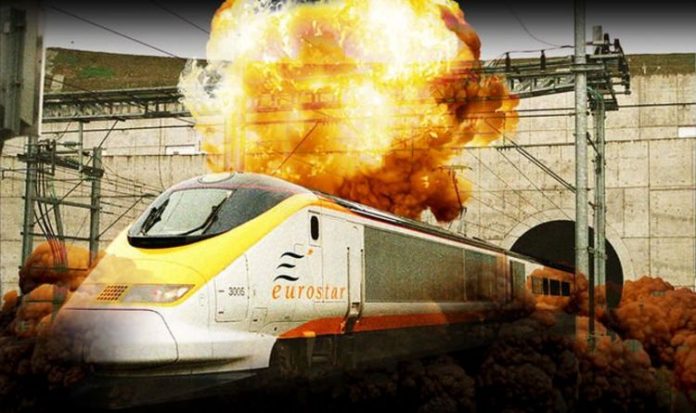The UK and EU have resumed face-to-face Brexit trade talks in London this weekend, as negotiators race to reach a deal before the end of the transition period. It comes after the EU’s chief negotiator Michel Barnier left a period of self-isolation after a colleague tested positive for coronavirus last week. Ahead of travelling to the UK, he said the “same significant divergences persist” in negotiations.
However, after arriving, he said he would work with “patience and determination”.
Earlier, Prime Minister Boris Johnson insisted the likelihood of a deal depended on the EU.
Speaking on Friday, Mr Johnson claimed that “there’s a deal there to be done if they want to do it”.
But he added “substantial and important differences” remained between the two sides, with just over a month left before a December deadline.
As the clock ticks down and tensions rise, once secret files, now tucked away in the National Archives at Kew, reveal how the British Government once made plans for a total break with Europe, which involved the option of blowing up the Channel Tunnel with a nuclear bomb.
The once-secret plot was drawn up by civil servants and senior military officials in March 1969, while plans for the tunnel were still being drawn out, and were devised in case of a Soviet invasion.
There would, Ministry of Defence civil servants claimed, be a certain amount of “collateral damage” to Kent.
And the cost was set to be astronomical if officials chose to carry out the secret plans.
The government would also be forced to keep the plot a secret from France, according to a letter from the Ministry of Defence that advised that explosive demolition ideas “should be covert and classified not less than SECRET UK EYES ONLY”.
But an atomic bomb would be “100 percent effective” at ensuring a “totally irreversible total collapse, rupture [of] tunnel and sea bed to cause total flooding and complete collapse of part of tunnel”.
The secret memo, first seen by the Independent, contained no detail of when the plan to include a nuclear weapon was dropped.
JUST IN: Michel Barnier’s PowerPoint shows ‘huge misunderstanding’
It was discussed further in 1974 when a nuclear weapon was the 14th and last option in an escalating series of contingencies which started at cutting off power to the tunnel.
As Britain was trying to win membership of the predecessor to the EU, it warned: “For overt preparations to be made to destroy our only link with France and the remainder of the Continent … when the UK is endeavouring to become a member of the Common Market and to convince continental Europe that we have shed forever our island mindedness?’
Ministry of Defence official, Michael Legge, is also quoted as saying: “The tunnel would be virtually unscathed by an explosion of very great magnitude.
“But that ‘total collapse’ could be assured with an atomic weapon. The concern appeared to be that the United Kingdom was protected by a natural moat, the English Channel, and any attempt to maintain open borders at a time of Soviet invasion could be devastating.”
DON’T MISS:
Johnson has hands tied on travel ban as UK ‘still subject to EU law’ [EXCLUSIVE]
Cummings’ Whitehall revolution attempted to ‘fix Tony Blair’s mistakes [INSIGHT]
EU accused of making ‘mistake’ with ‘misleading’ chart in Brexit talks [REVEALED]
Current contingency plans for the tunnel are protected by modern day national security and secrecy rules.
The idea of a tunnel under the Channel was first mooted in 1802 when Albert Mathieu-Favier suggested a passage for horse-drawn carriages.
Asked whether the building of the current Channel Tunnel involved plans for disabling it in the event of an invasion, a Eurotunnel spokesman told the Independent: “There has always been a military aspect to it, but I cannot give any further insight into what plans may or may not exist.”







